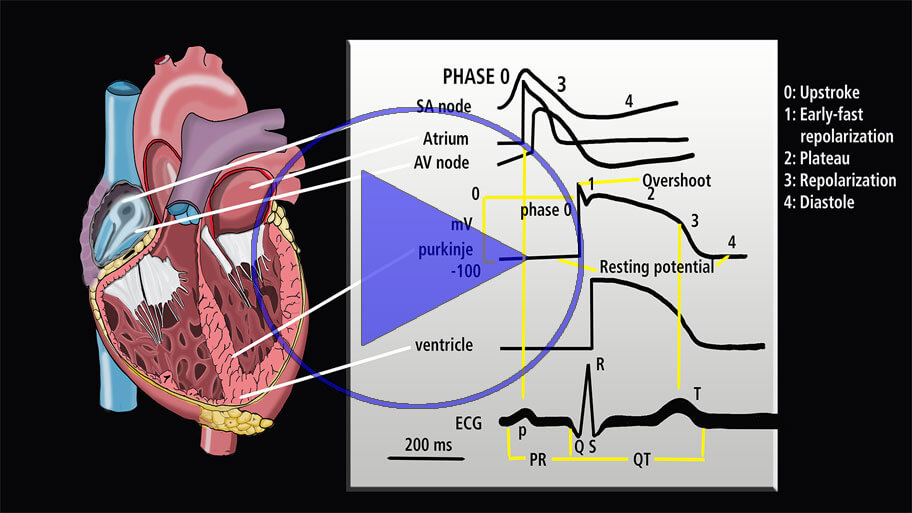Immobility and the supine position creates a physiologically dysfunctional environment. As a component of acute care physical therapy continuing education, understanding the physiological effects of positioning and immobility provides a pathway to developing appropriate care plans for acute care patients. Multiple studies have been published on the positive impact that positioning has had on outcomes during the COVID pandemic.
Let’s talk about the effects of immobility on the respiratory system specifically. One of the biggest things that happen when a person is immobile for even 24 hours is compression atelectasis. To understand atelectasis, think of the lungs–we all think of them as a big air-filled sack–let’s also think of the fluids around the lungs. What happens when you lay flat is because you have that compression against the back, the lungs settle; and the ability to move the air in and out of those tiny little grape-like alveoli becomes very, very difficult. As you lay on your back in a supine position, the pressure coming down on those little sacks becomes so great that they stop filling with air. The risk here is that once they stop filling with air, then they start filling with fluid.
We have all told patients when we go in to get up; it’s good for you. It keeps your lungs healthy and keeps the fluids out.
We have all told patients when we go in to get up; it’s good for you. It keeps your lungs healthy and keeps the fluids out. That is true because as you come out of the supine position into an upright position, the body’s drainage system throughout the respiratory system and lungs begins to work again. After all, it is no longer is in that supine position, causing that compression atelectasis. It doesn’t have that pressure. It can then begin to drain in the way that the body was meant to drain, and those lungs can drain in the way that they were meant to drain. So compression atelectasis is when the pressure is coming down on the lungs. Because you are in a supine position, you have gravity coming down, and it forces a deflation of those alveoli. Once it forces a deflation of those alveoli in the lungs, then you no longer have the capacity to breathe in and breathe out as you normally would.
Immobility causes a deficiency in clearing the lungs because of the compression due to pressure. There is also a decreased motility of the cilia. As you may remember from your physiology way back when–let’s go back in your brain; remember the physiology that we all had to learn–there are cilia in the lungs that move the fluids along. It carries the fluid, the mucus, everything in our lungs that is normal, that’s supposed to be there. The cilia in the lungs move that along. We all know that smoking kills those cilia. It decreases the amount of motility, but also immobility decreases the mobility of these cilia. By being immobile, those cilia no longer move in the fashion and the rate they would for the person who’s up and moving around. So the motility is significantly decreased with immobility. It also diminishes your mucociliary escalator. As I said, the cilia move the mucus, but there’s a process in the lungs, an escalator, that has this mucus; the cilia have a way of moving. It is a process of moving the mucus out of the lungs. When you become immobile, and you lay supine, that escalator doesn’t work. So there is a buildup of mucus as well as fluid in the lungs. It diminishes our cough reflex.
Again in the supine position, if you think about it from a musculoskeletal standpoint, the diaphragm cannot be as effective and productive when you’re lying in the supine position. Our cough reflex in our brain centers diminishes with immobility; that is related to the positioning and the actual debilitation of our musculoskeletal system, diminishing that cough reflex. That decrease in the drainage of the mucus and the fluids causes the development of mucus pools. Being supine and immobile causes these pools of mucus and fluid to collect in the lungs.
Learn more about Atelectasis in our new Acute Care Physical Therapy Continuing Education Online Course.
Develop the knowledge and skills necessary to effectively integrate your rehabilitation skills into the acute care hospital environment. A trained acute care therapist can help mitigate the effects of immobility on the respiratory, cardiac, neurologic, and musculoskeletal systems. Recent studies have identified improved respiratory function with early mobilization techniques such as proning. Learn the skills necessary to identify yourself as an essential part of the acute care team is critical, especially in pandemics such as COVID.
Our new acute care physical therapy continuing education course, Acute Care Rehabilitation is a great way to improve your skills in the acute care therapy setting.

References